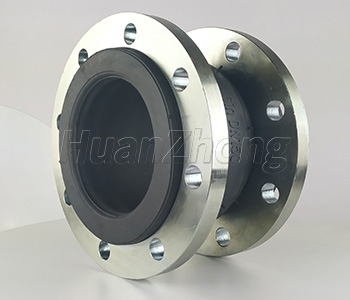Gongyi HuanZhong Pipeline Equipment Company is a professional manufacturer in Rubber Expansion Joint, Metal Bellows EXPANSION Joint, Duckbill Check Valve, Dismantling Joint, Wall Sleeves, Rubber Shock Absorber and other Pipe Accessories manufacturing with more than 20-year experience. CR and NBR are the common material used in reducing rubber expansion joint producing. Knowing the different features of CR and NBR is very important in rubber joint choosing.
NBR is the copolymer of butadiene and propylene fine. It’s particularly great in resistant to gasoline and fat hydrocarbon oils, just a little bit worse compared with sulfur rubber, acrylic and fluorine rubber, but better than other general rubber. Good heat resistance, air tightness, wear resistance and water resistance, strong adhesion etc. The disadvantage is that cold resistance and ozone resistance is not good enough, and low elasticity, poor resistance to acid, bad electrical insulation, also poor in the polarity of solvent resistance. Temperature range: about -30℃~+100℃. Mainly used in manufacturing all kinds of oil resistance products, such as rubber hose, sealing products, etc.
CR is a kind of multi purpose elastomer with good comprehensive properties. It’s of good tensile strength, excellent physical toughness; good heat resistance, ozone resistance, weather resistant and aging resistance, especially, it’s heat resistance is better than nitrile rubber sheet; weather and aging resistance is better than EPDM rubber sheet; What’s more, CR is also of good resistance to oil and chemical corrosion and flame retardancy with 38-41oxygen index. Chloroprene rubber is mainly used in inflaming retarding, adhesion, heat resistance, weather resistance, medium electric resistance etc.
